To celebrate the French pianist Pascal Rogé’s 70th birthday on 6 April 2021, we asked him for an interview. He represents worldwide one of his generation’s best-known performers of 19th- and 20th-century French music, setting interpretative standards for this music in his concerts, master classes and CD recordings. For ten years now he has been collaborating with the G. Henle publishers to provide fingering for the piano parts of 18 Urtext editions – for works by French composers, of course, ranging from Saint-Saëns through Chabrier and Fauré up to Satie und Ravel.
Peter Jost (PJ): Mr Rogé, you studied at the Paris Conservatoire with Lucette Descaves, formerly a student of Marguerite Long’s. M. Long was indeed still in close touch with composers such as Fauré, Debussy and Ravel. What role at that time did her fingerings play, and were they then ranked as authentic?
Pascal Rogé (PR): About fingerings, I remember a phrase of my teacher, Lucette Descaves: “Fingerings are like shoes, they don’t fit anyone”. Something I often repeat to my own students, BUT if my teacher was not “directive” on her fingerings, she had a few “principles” that were very helpful: “always follow the shape of your hands… avoid turns… if you have a choice, certain fingers are more expressive… or more powerful… so, choose carefully…” and although she was a pupil of Marguerite Long, she disagreed with Long’s motto: “no thumbs on black keys”, a rule I personally never understood!
Concerning my knowledge about fingerings I also had the heritage of two great Masters in the subject: Yves Nat and Lazare Lévy.
Yves Nat was the teacher of my mother and Lazare Lévy the teacher of Louise Clavius-Marius, a today rather unknown teacher who assisted Lucette Descaves, but was a real genius on fingering and practicing. I owe her nearly everything of my piano technique and fingering skills.
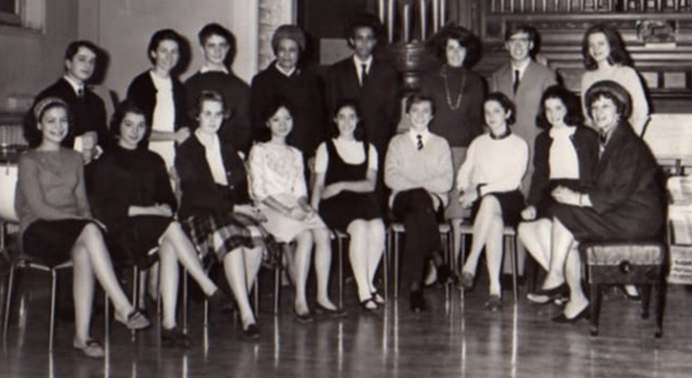
Lucette Descaves’ piano class in 1965. Lucette Descaves is sitting on the far right, the Labèque sisters next to her and Pascal Rogé in the centre. Standing fourth from left is Louise Clavius-Marius (1906-1975, with hat).
As to the question, “were there any ‘authentic’ fingerings”: Neither Fauré, Debussy nor Ravel were good pianists, so they hardly ever mentioned any fingerings, and when they did, I consider them as “suggestive” but never compulsory.
I am sure you are familiar with the words of Debussy in his Études’s first edition: “I intentionally do not mention any fingerings“, therefore: “Cherchons nos doigtés!”
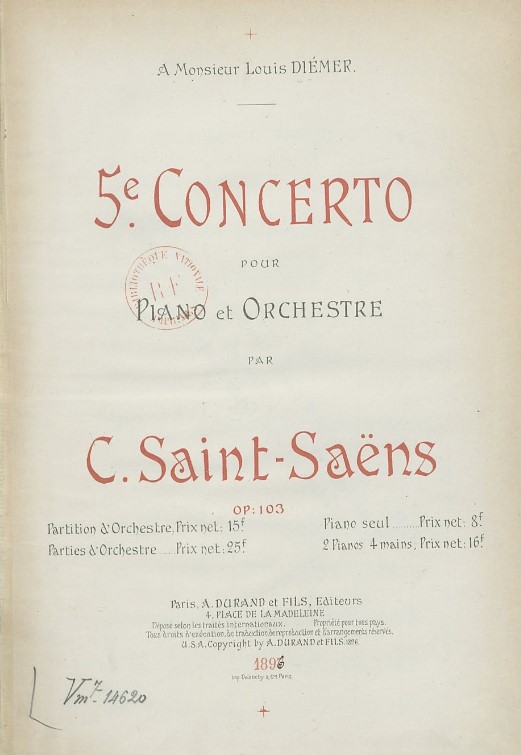
Camille Saint-Saëns, title page of the first print of his 5th Piano Concerto, Paris, Bibliothèque nationale de France
PJ: In our Debussy interview you observed that if you thought that the original fingerings and hand distributions would stand in the way of an adequate interpretation, you would then change them. I remember, for instance, the finale of the Saint-Saëns 5th Piano Concerto (HN 1144), measures 6 ff., where you reversed the hand distribution in opposition to the notation:
PR: I strongly believe in fingering “arrangements”, as long as they do help and remain unnoticeable. Some arrangements turn out to be more difficult or awkward than the original was!
As the example here, in the Saint-Saëns 5th Concerto this “arrangement” is mainly to make Saint-Saëns’ wish possible, to accent the top note of the chord, something very difficult to achieve if played with just one hand, for then the accent would undoubtedly involve the whole chord.
PJ: You go even a step further in the first movement of Fauré’s 1st Violin Sonata (HN 980) and cancel the composer’s own explicit hand distribution by means of his m. g. (m. 140):
Could you explain your view of this spot?
PR: This is typical of a composer’s fingering, thinking that the entire musical phrase should be played with the same hand, and also from a “not so good” pianist (Fauré was an excellent organist, but that’s something else again!). My fingering is much easier to perform and won’t make any difference in the result, it is actually not an “arrangement” it is just logical (sorry Gabriel!).
PJ: You have taken on fingerings for the three Satie titles (Sonatine bureaucratique HN 1075, Avant-dernières Pensées HN 1181 and Nocturnes HN 1205). This may surprise us at first, since coming from his Gymnopédies or Gnossiennes, his piano works are considered relatively simple. But is there still another aspect besides what’s technical?
PR: Fingerings do influence interpretation and the choice of a specific finger will produce a different sound. That is how I approached fingering Satie who as you mentioned, is not technically challenging but asks for a special atmosphere, sound, transparency, simplicity… I wish my fingering may inspire and help the performer to play Satie in the right style.
PJ: Could you demonstrate this with an example?
PR: Take, for instance, “Nocturne” no. 2, measure 14, right hand:
 This shows that I do favour the “physical” legato with the fingers but rather a “transparent” and clear sound obtained with a “half-pedal” legato which “floats” above the keys rather than sticking to them … It’s hard to express with words and even harder to show with numbers! But by indicating “leaping” fingerings I hope the performer will look at legato “differently” … Am I being a bit presumptuous in wanting to suggest a particular sound by way of a fingering? Yet this is the meaning I am giving to fingering “easy” scores like Satie: suggesting by the fingering a sound and stylistic approach.
This shows that I do favour the “physical” legato with the fingers but rather a “transparent” and clear sound obtained with a “half-pedal” legato which “floats” above the keys rather than sticking to them … It’s hard to express with words and even harder to show with numbers! But by indicating “leaping” fingerings I hope the performer will look at legato “differently” … Am I being a bit presumptuous in wanting to suggest a particular sound by way of a fingering? Yet this is the meaning I am giving to fingering “easy” scores like Satie: suggesting by the fingering a sound and stylistic approach.
PJ: What role do fingerings play when you yourself are teaching, such as in your master classes? Is this an important issue, or is it an aspect only occasionally addressed?
PR: It depends… I always watch the student’s fingering but if it’s musically convincing and does not seem to be a problem, I will not change anything (see my teacher’s “shoe” phrase!). But if the sound is not appropriate or the legato unsure, or if I can see that the student is “struggling” with a difficulty, then I will suggest another fingering, but only suggest, I always say “Try it, and if you feel more comfortable, do it…if not, forget it!”
I also try to give them some logical approach to fingering, some concept they can apply to other pieces. I do the same with interpretation, I am there to help them play however they wish…not to impose my own vision of the piece, but things like sound, colours, articulation, balance, art of pedalling, construction of a phrase… can be applied to any repertoire and any interpretation.
PJ: I thank you very much for this interview and look forward to our collaboration on further editions in the G. Henle publishing house.




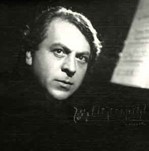
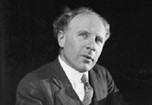

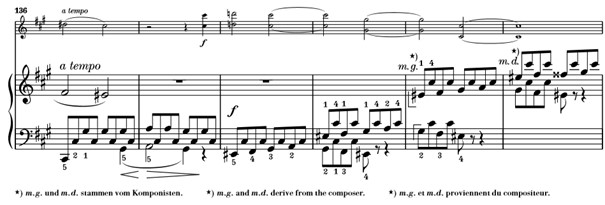
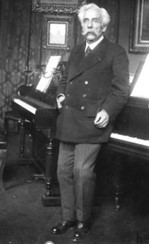
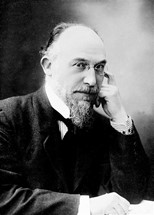
Just because it IS the fingering of a great composer, Faure’s distribution is more pianistic than the proposed revision and musically superior since it prevents accentuation of the beginning of each imitative entry with a resulting disruption of the phrasing.
The fingering in the Satie is incomplete and what is omitted is not obvious to a player reliant on editorial fingering. And the fingering given at the end of the Satie example will confound such a player. There are so many alternatives that preserve the legato.
Was the statement that Debussy was not a “good pianist” a misprint? If not, it deserves amplification.
Thanks for your comment. As already expressed in Descaves’ quotation: Fingerings don’t fit anyone. In the Henle editions, they always reflect the subjective judgment of the respective pianist. Of course, every user is free to look for other solutions that are better suited to them.
When Fauré, Debussy or Ravel are mentioned as “not so good pianists”, then of course in relation to the level of top pianists of our time. As you know, the qualities of these composers as pianists have been hotly debated for years …
Best regards
Peter Jost